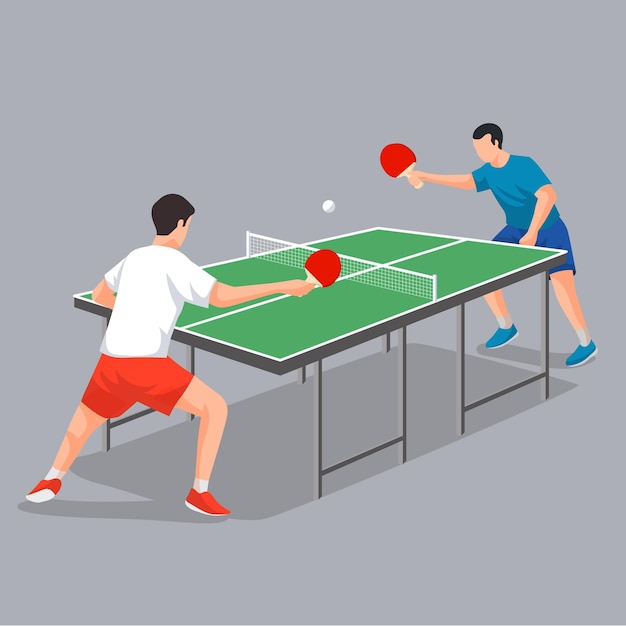Classic Games
Mastering the Art of Precision: A Comprehensive Review of “Ping Pong”
Table of Contents
ToggleIntroduction:
In the realm of sports simulations, few games capture the essence of fast-paced, precision-driven athleticism like “Ping Pong.” Renowned for its simplicity yet demanding mastery, this digital adaptation of the classic table tennis sport has enthralled players for decades. In this extensive review, we’ll explore the gameplay mechanics, dissect the nuances of “Ping Pong,” and delve into strategic insights to help players refine their skills in the quest for table tennis supremacy.
Gameplay:
1. Control and Physics: “Ping Pong” recreates the dynamics of real-life table tennis with remarkable accuracy. The controls are responsive, allowing players to maneuver the virtual paddle with precision. The physics engine plays a crucial role in simulating the realistic trajectory of the ball, factoring in spin, velocity, and angle of impact.
2. Player Movement and Positioning: Controlling the player’s movement is fundamental in “Ping Pong.” Maneuvering across the table to reach the ball while adjusting the paddle’s angle to execute precise shots requires a delicate balance of skill and timing. Mastering player positioning is the key to gaining a strategic advantage over opponents.
3. Shot Variety: “Ping Pong” offers a wide array of shot options, ranging from simple forehand and backhand strokes to advanced techniques like topspin, backspin, and smashes. Each shot type requires a nuanced approach, considering factors such as ball trajectory, spin, and opponent positioning.
4. Serving Techniques: The serve is a pivotal moment in any table tennis match, and “Ping Pong” provides players with various serving techniques. Players can experiment with different spins, speeds, and placements to keep opponents guessing and gain an early advantage.
Strategies for Success:
1. Focus on Ball Tracking: Maintaining a keen focus on the ball is essential. By tracking the ball’s movement across the table, players can anticipate its trajectory and respond with well-timed shots. This is the foundation of precision gameplay in “Ping Pong.”
2. Master Spin Control: Understanding and mastering spin control is a game-changer. Different spins alter the ball’s behavior upon contact with the paddle, introducing an element of unpredictability. Skillful manipulation of spin can deceive opponents and create opportunities for strategic play.
3. Adaptability to Opponent’s Style: Successful players in “Ping Pong” are adaptable. They assess their opponent’s playing style, strengths, and weaknesses, adjusting their strategy accordingly. This adaptability keeps the gameplay dynamic and prevents opponents from exploiting consistent patterns.
4. Utilize the Entire Table: Effective players utilize the entire table strategically. By sending the ball to various corners and edges, they force opponents to cover more ground, creating openings for well-placed shots. This tactical approach maximizes the chances of scoring points.
5. Mix Up Shot Selection: Variety is a key component of success in “Ping Pong.” Skilled players mix up their shot selection, incorporating a blend of fast-paced attacks, well-placed volleys, and unexpected changes in spin. This unpredictability can catch opponents off guard and disrupt their rhythm.
Visuals and User Interface:
1. Realistic Graphics: “Ping Pong” typically features realistic graphics that enhance the immersive experience. From the animation of player movements to the lifelike representation of the table and surroundings, the visual elements contribute to the game’s authenticity.
2. Intuitive User Interface: A user-friendly interface is crucial in a game that demands split-second decisions. The controls and menu layouts in “Ping Pong” are designed to be intuitive, allowing players to navigate settings, adjust preferences, and focus on gameplay seamlessly.
3. Dynamic Camera Angles: Dynamic camera angles add a cinematic touch to “Ping Pong,” capturing the intensity of each rally. The ability to switch between different perspectives allows players to appreciate the action from various angles, enhancing the overall visual appeal.
Accessibility and Variations:
1. Cross-Platform Availability: To cater to a diverse gaming audience, “Ping Pong” is often available on various platforms, including computers, gaming consoles, and mobile devices. This cross-platform accessibility ensures that players can enjoy the game on their preferred devices.
2. Single and Multiplayer Modes: “Ping Pong” offers both single-player and multiplayer modes, accommodating players seeking solo challenges or engaging in head-to-head competitions. The multiplayer mode allows players to test their skills against friends or opponents from around the world, adding a social dimension to the experience.
Multiplayer Experience:
1. Real-Time Matches: The multiplayer aspect of “Ping Pong” brings a dynamic and competitive edge to the game. Real-time matches allow players to face off against opponents in thrilling head-to-head encounters, fostering a sense of competition and camaraderie.
2. Rankings and Leaderboards: For those craving a competitive environment, “Ping Pong” often includes ranking systems and leaderboards. Players can gauge their skills against a global community, climb the ranks, and strive for recognition as top-tier table tennis competitors.
Conclusion:
“Ping Pong” stands as a testament to the enduring appeal of sports simulations that capture the essence of real-world athleticism. With its realistic physics, strategic depth, and accessible gameplay, the game offers an engaging experience for players of all skill levels. Whether you’re a casual player looking for a quick match or a competitive gamer aiming for mastery, “Ping Pong” provides a virtual table tennis arena where precision, strategy, and adaptability are the keys to victory. So, grab your paddle, focus on the ball, and immerse yourself in the dynamic world of “Ping Pong,” where every stroke is a step towards perfection in the pursuit of table tennis excellence.



